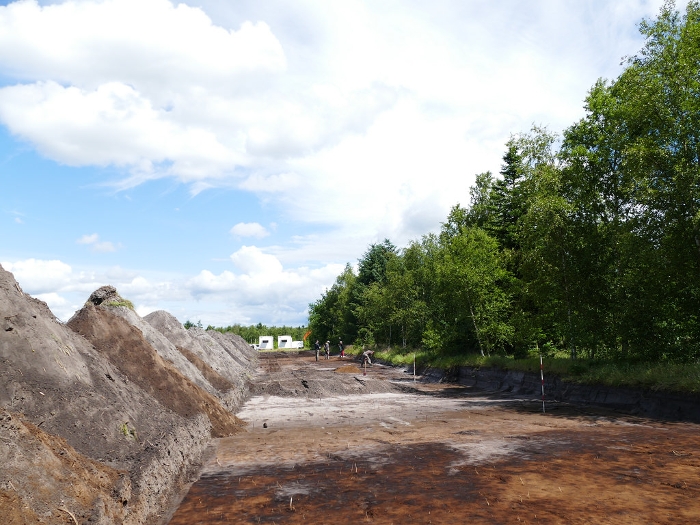
Boest: Bronze Age at its best
Prof. David Fontijn’s Economies of Destruction team was invited by Museum Midtjylland to participate in this year’s excavation in Boest, Jutland (Denmark). The exceptional site of Boest includes burial mounds, an alignment and depositions, consisting of axes, spearheads and rings, dating to the Bronze Age.

The Economies of Destruction project investigates Bronze Age depositions and their contexts. Often, the exact context of Bronze Age depositions is unknown, but Boest offers a unique chance to investigate the context of these depositions, contributing to our understanding of metalwork deposition practices. The excavation was a great opportunity to answer a number of questions regarding deposition practices in general and the site of Boest in particular. Which locations were selected for depositions? Which role do these deposition sites play in the broader landscape? In which context were the axes, spearheads and rings deposited at Boest? And how are the depositions connected with other prehistoric structures at the site?

Previous investigations resulted in the discovery of an alignment of postholes, and the focus during the current excavation was on documenting this alignment. The alignment consists of five rows of postholes and is at least 300 m long, and it leads to a lake close to the site, which may have been a bog during the Bronze Age. Bogs appear to have had a special significance in prehistory, which makes the alignment even more interesting. Surprisingly, traces of three houses were discovered as well. Analyses of finds from the house structures, including large pieces of charcoal, will give more information on a more precise dating of these structures. It is evident that Boest was an important site during the Bronze Age, as demonstrated by the presence of burial mounds, house structures, depositions and the alignment. Future investigations will hopefully shed more light on the nature of the alignment and the Bronze Age landscape at the site. The deposition finds from Boest are displayed at Horsens Museum and at the National Museum in Copenhagen.

The EoD team is hoping for continued investigations at Boest next year, in cooperation with Museum Midtjylland!
